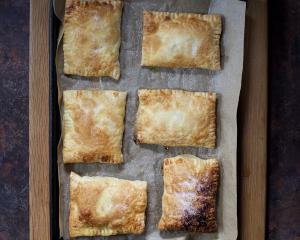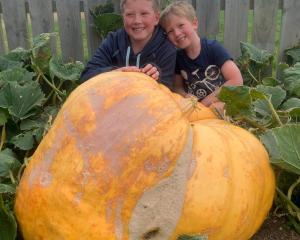In New Orleans, cocktails are serious business. What better town for a temple to the history of the American libation?
Many outsiders may get their idea of the Big Easy's cocktail culture from the jumbo-sized plastic cups of punch slugged down by tourists on Bourbon Street.
But the Museum of the American Cocktail opening in July will focus on the rich history of sophisticated drinks that have been served since Thomas Jefferson was president 200 years ago.
Cocktails - originally defined as any mixture of bitters, spirits and sugar - were an early fixture in this French port city. Besides easy access to sugar, a European sensibility allowed a drinking culture to flourish when it foundered elsewhere in the South's Bible Belt.
"I definitely think New Orleans has always been the home of civilized drinking," said Ann Tuennerman, founder of Tales of the Cocktail, an annual festival that attracts thousands. "The image the tourists have is not how most locals think of drinking. We believe in better, not more."
The museum is located near the French Quarter and features a collection of rare spirits, books, and Prohibition-era literature. There will be vintage cocktail shakers, glassware, tools, gadgets and other cocktail memorabilia.
"It's a fanciful combination of things," curator Ted Haigh said. "And New Orleans is the ultimate fit - a city that loves celebration and history."
New Orleans' culture and celebrated laid-back attitude have shaped its drinking habits, said Dale DeGroff, president and co-founder of the museum.
"In the rest of the country until prohibition, bars were pretty much the male territory," said DeGroff. "In New Orleans, with its European approach to things, they called them coffee houses and men and women used them equally."
The museum's nonprofit organization was founded in 2004 and displayed some of its exhibits in a temporary space before Hurricane Katrina. The permanent museum opening on July 21 promises an impressive series of seminars with professionals and scholars.
"The museum is a very serious undertaking that will have a lot of serious work going on," Haigh said.
There will not be a bar, but there will be tastings in connection with some events.
"If, for instance, we have a seminar on the 19th century cocktail, those attending will have a chance to taste those cocktails," Haigh said.
Some historians believe the first cocktail - the Sazerac - was invented in New Orleans by Antoine Amadie Peychaud, a Creole apothecary with a shop in the French Quarter in the early 1800s.
Haigh disputes the theory. "Peychaud would have been 3 years old when the first one was made," he said.
The Sazerac caused a stir in Louisiana's most recent legislative session when a bill to name it the state's official cocktail ran into opposition from lawmakers who felt they shouldn't promote alcohol. Supporters settled for naming it the city's cocktail: a mixture of rye whiskey, sugar, bitters and absinthe, or a substitute anise-flavored liquor.
Little-known facts about the origins of the cocktail
Although people tend to call anything in a V-shaped glass a cocktail, the drink traditionally is required to have spirits, sugar and bitters. Some other facts about the drink:
- Originally, the cocktail was considered a morning eye-opener. Some speculate that's how it got its name - a metaphor for a rooster (cock) heralding the light of day.
- In New Orleans, legend has it Antoine Peychaud served his blend of bitters and brandy in eggcups, known as "coquetiers" to the French-speaking residents. The word later was corrupted to "cock-tay," and finally to cocktail.
- In the 1800s, bitters were used as medicine. Peychaud's Bitters' label still reads, "Good for what ails one irrespective of malady."
- Martinis and Manhattans were not developed in the United States until vermouth began being imported from Europe.
- Two of the earliest recorded enhancements to the cocktail were a sugar-crusted glass lip with fruit peel (called a crusta), and the addition of absinthe.












